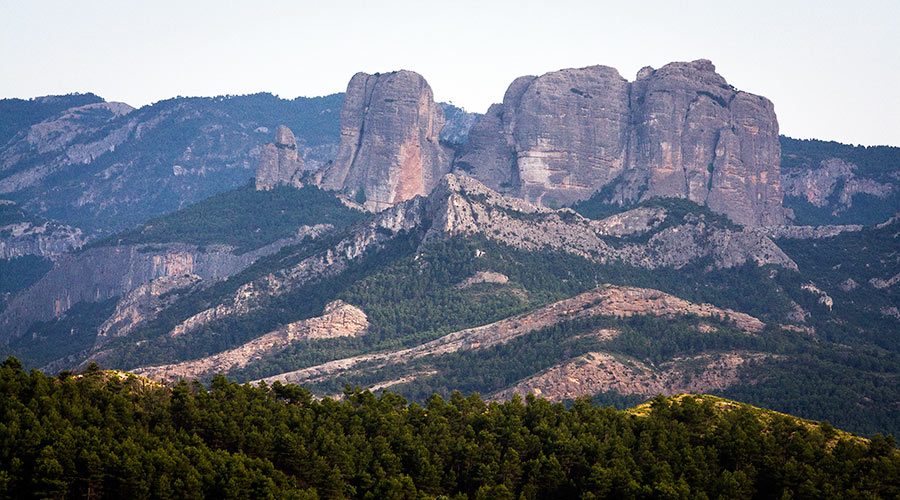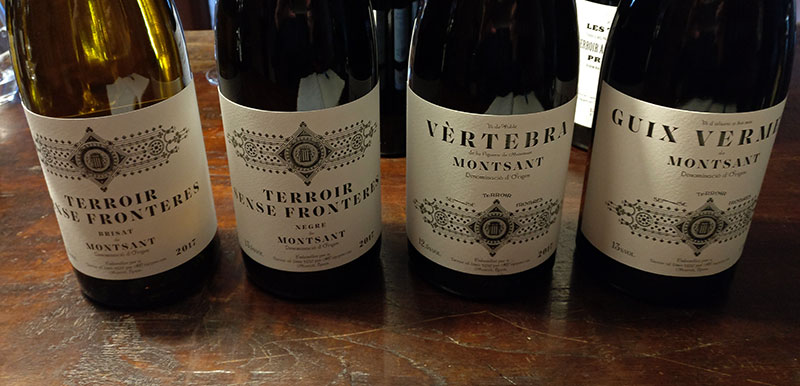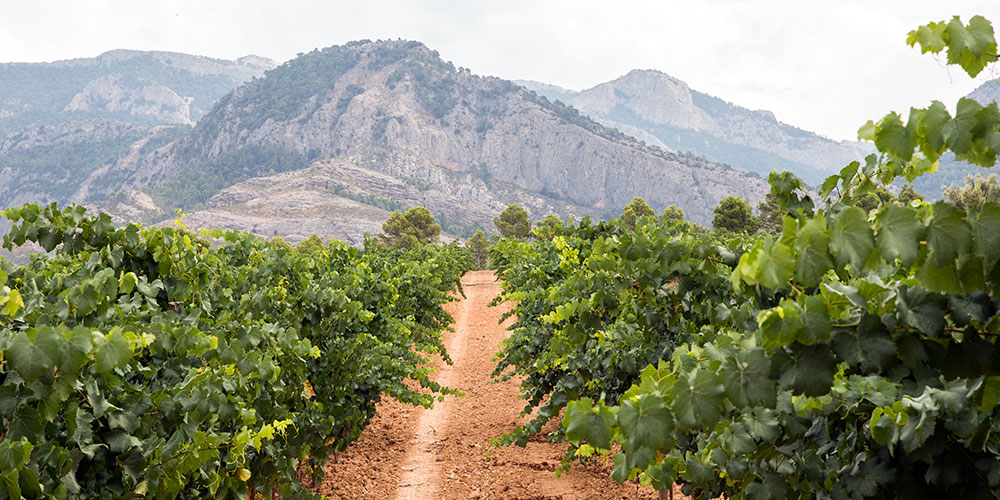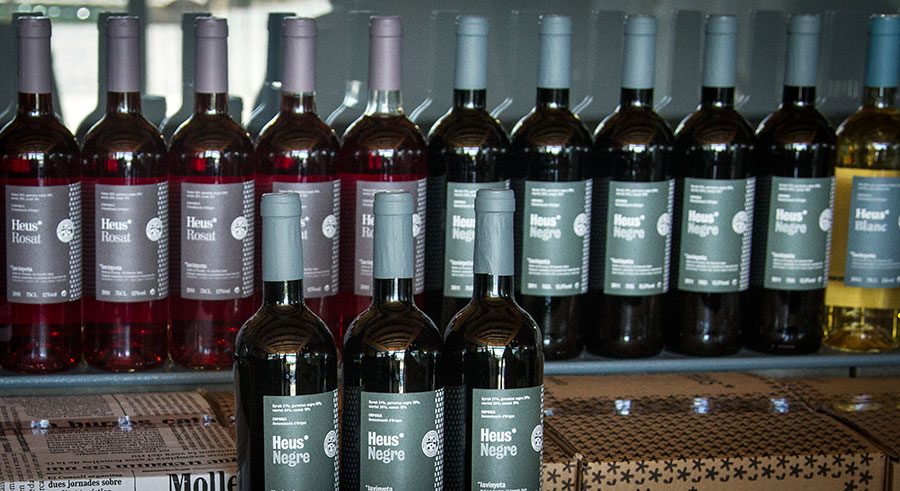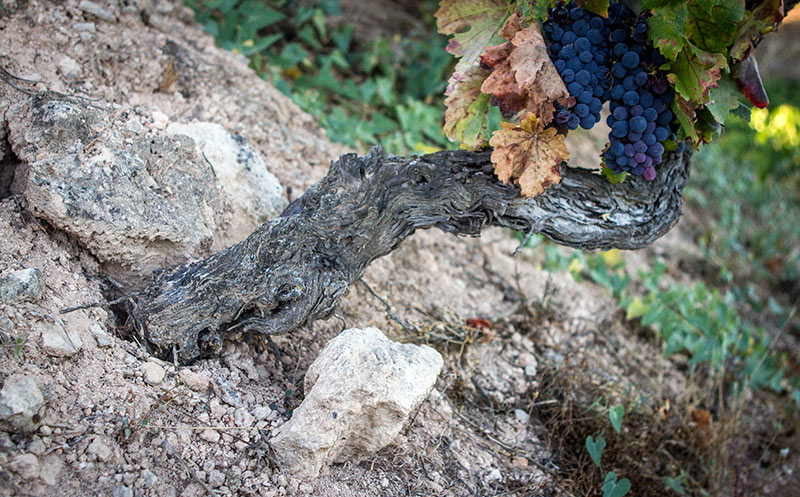So, where to start with DO Terra Alta? It’s probably best to say that they’re the most southern of Catalonia’s denominations of origin. They’re also one of the highest in terms of altitude with elevations starting at 400m and going up to 1,400m. Thus the name, Terra Alta or “high land” being as literal as it is evocative.
The funny part about this most obvious aspect of Terra Alta is that in real life, you don’t feel these heights. It feels flat, normal, and those pointed peaks in the distance are what seem to hold all the elevation. But this is one of the key differences of the region when compared to others such as nearby Priorat & Montsant in that it feels more consistent and unassuming despite its rather extreme geography. This is crucial to the microclimate as it is neither continental nor Mediterranean. Terra Alta sits somewhere in the middle and to a large degree they have the best of both.
The last time I really tasted the wines of this region in earnest was at a fair in Barcelona in May of 2012. At the time they were pushing a big promotion about how they have the ideal territory for White Grenache. To a large degree, this is true as this continental/Mediterranean climate does indeed allow for excellent ripening while at the same time maintaining acidity and balance with the variation of diurnal temperatures. While I admittedly don’t love every White Grenache from Terra Alta, there are many that I do and they are one of the very, very few regions that can make an excellent varietal wine from this grape.
Given this length of time and the election of Joan Arrufí as the new president of the DO last year, I thought it might be time to pay another visit. Coming from Priorat, as you pass through the county of Ribera d’Ebre you leave behind these flatter lands alongside the Ebre River and as you enter Terra Alta proper, you rise. The roads bend slightly one way, then the other as they take you gradually up in elevation.
As the ascent levels out, you come to what I believe to be a beautiful territory. I’m not alone in this as Pablo Picasso spent many years in the village of Horta de Sant Joan, working on his paintings with a view to the south of the striking Els Ports mountains which are pictured at above. But a touch to the north, in the village of Batea, I eventually found my way to Joan and his cellar, Altavins.
As Joan told me, “Viticulture is the heart and primary economy of Terra Alta.” It’s no surprise as they have some 6,000ha of vines and produce about 44 million kilos of grapes in a good year. Not a shabby amount and it’s some 50% more than Priorat and Montsant combined. Yet, they only see about 7 million bottles of wine which is just slightly more than only one of the DOs in the Priorat county. So, what happens to the rest of the grapes? Quite simply, winemaking titan, Torres buys some 12 million kilos or about 25% of their entire production. This is then bottled as DO Catalunya wine and thus, not final wine from Terra Alta.
I feel that, despite their remote, far-flung situation, it’s this ongoing work with Torres that has served them well over the years. Undoubtedly, given the general price of grapes in Spain, no one is getting rich in this affair but it keeps the lights on and has allowed for a vibrant boutique segment of wineries to develop. This boutique portion is a large part of the reason why a younger winemaker like Joan has come to be the president. He represents these winemakers which are now about half of the registered cellars. This is always a segment of any winemaking region that should grow.
The tendency for boutique cellars is to make smaller production wines that are striving for deeper, more interesting wines that carry a sense of locale so necessary to see a region at its finest. They will also often pay more for the higher quality grapes. Thus, the viticulturists make more and in general, they pull the whole region up in terms of quality. This is not an easy road to take but it’s one that the wines of Terra Alta are following and has been pushing their quality further upward with each vintage. They still have a wide range of production they have to contend with as there are some vines that produce the rather beefy totals of 6-7kg grapes and then others that produce a mere 1kg of very concentrated, excellent grapes.
While the region has become well-known for White Grenache in recent years, it isn’t a predominantly white region as I had thought at one point. In the words of Joan, “We have been producing more white grapes each year to the point where it’s nearly 50/50 in terms of white and red production.” But most assuredly it’s Grenache that’s the main grape of the region with the white and red variants making up half of the total production. There’s also a good deal of Macabeu and Pedro Ximénez in the white department as well as considerable Carignan and a decent hit of Syrah and Tempranillo (ergh…) in the reds.
While it’s a minor part of their production, they’ve made great strides in recuperating an old grape called, Morenillo. This was a grape that was nearly lost, but there are now five or six cellars producing wines based upon it that have received a good deal of praise in local press.
Like most all of Southern Europe, 2014 was a harvest to leave behind. The production was way down, but wines are good but should be enjoyed soon. The harvest of 2015 was a very different beast and one with which Joan is excited, “Very clean, very little hail damage, excellent acidity. All in all, an excellent harvest.” I’m looking forward to tasting more of these wines in the near future as this region appears to be pressing all the right buttons to put out excellent wines that keep getting more interesting and showing their region wonderfully. We will only see if I’m right in the vintages to come in addition to enjoying the very tasty vermouth that they produce.
